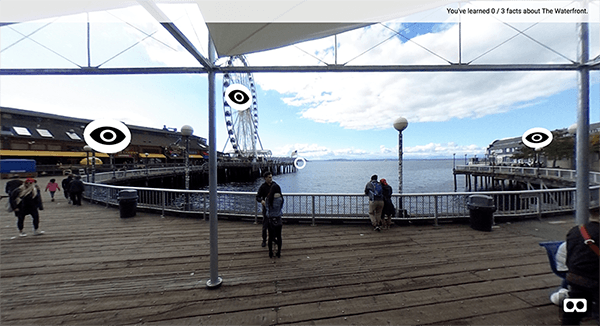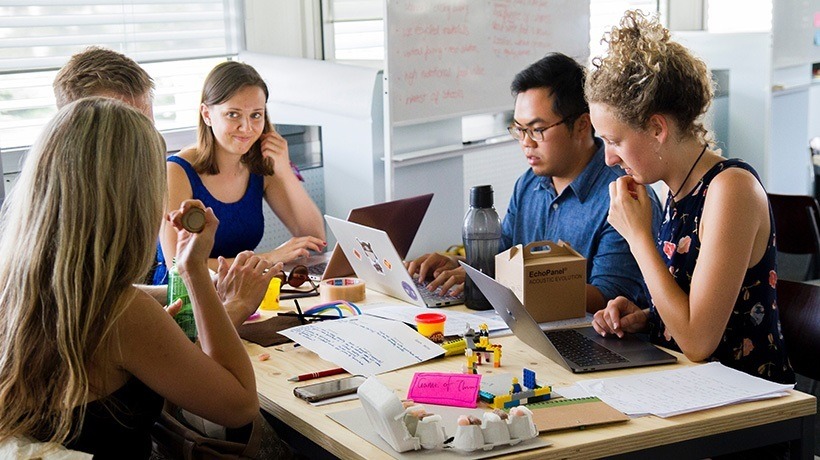How To Support The Development Of Your Digital Learning Team In 2018
As learning professionals, we create and curate learning but our own skill building is often forgotten about. Ironic, right?
When I first started in the field, I was afraid to build my skills at work. I didn’t have a portfolio outside of work. When it came to being an Instructional Designer, I felt like I was on an island all by myself. I had no idea that there was a whole world of learning professionals out there. I had no idea there were so many resources out there to help develop, well…me.
I’ll never be done learning or developing my skills. I’ve made it my mission to continually share what I’m learning. I’ve also made it a mission to help other learning designers find their passion in the field. Digital learning is my passion and I’ve found a lot of ways to develop my skills in the digital learning space. This article isn’t just for those who lead a team, however it’s always really a nice thing when you’ve got the nod of approval from leaders. As learning professionals we should be demonstrating and advocating for a culture of learning.
Here are a few things you can support your team on, in order to develop their skills in the digital learning space.
1. Face A Challenge
One of my first interactions with other eLearning developers was through the E-Learning Heroes Community, specifically through the E-Learning Challenges. The E-Learning Challenges helped me early on to develop my skills in eLearning development and build my portfolio. Every week a new E-Learning Challenge prompt is published but you can submit to any of the challenges at any time. The challenges aren’t meant to be full blown projects, you really only need to spend a few minutes to a few hours on each one.

Recently I have been building my skills in UI design. I turned to the Daily UI Challenges to help me build those skills. You sign up and are delivered a new UI design prompt every day for 100 days (minus on the weekend). I’ve been posting my UI Design entries to my Dribbble but you can also post them to your site/blog like this Instructional Designer did. Also, you don’t have to complete a prompt everyday. I work on them when I have some spare time. One of the prompts was to create a calculator and it gave me the chance to try out the tool Principle for UI animation.

Another noteworthy challenge is the 100 Days of Code challenge. I suggest checking this one out if you are looking to build skills in coding for front-end development.
2. Look Outside Of L&D
Encourage your team to look at projects outside of L&D. I got way better at designing digital learning experiences when I started to look to the field of web design. It seemed like a “duh” moment to me because of course, many digital learning experiences are on the web. I even curated a list of resources that help inspire my designs.
3. Share Interests
It sounds really simple but it’ll be a huge help. Have your team go around the table and share what they want to build their skills in and also have teammates share what they think their colleagues' strengths are in. Learning about what my teammates want to build their skills in has been eyeopening. It allows teammates to help each other build skills in those areas. Say, a teammate wants to build their skills in graphic design, perhaps another teammate needs a graphic for a project. It’s the perfect time to leverage that teammates desire to build that skill.
4. Provide The Time
Providing the time for your team to develop skills seems like another no-brainer. When learning is a priority for managers it makes it way easier for individual contributors to get on board. Learning and skill building should be a part of the job. Let your team know it's okay to take a certain amount of time a day/week to work on skill building or to work it into projects. Building my skills at work has allowed me to work faster and smarter. Some other outlets I use to build my skills are through LinkedIn Learning, YouTube Channels (I generally search for a topic and find a good channel of tutorials), and Codecademy (for coding).
5. Create A Conference Plan
One of the best things some of my past managers have done is to help support me to go to conferences. There are so many great L&D conferences out there. Conferences have given me the ability to connect with new learning professionals and learn about how their teams work. Many of my best practices come from folks who I have connected with at conferences and have built relationships with. Make a plan to get your people to conferences, you or your team may write a paper justifying the cost, apply to present to conferences (many will waive their registration fees), or inquire about volunteer opportunities (you may also be able to get your registration fee wavered this way). Check out some of the L&D conferences for 2018.

6. Create An xAPI Enabled Project
SCORM won’t be around forever and I believe this is the year that xAPI really starts trending upwards. xAPI allows you to track almost anything you want when it comes to learning. Over the past year I have been working on xAPI projects and building up my skills, so I am ahead of the game. Don’t wait until it’s too late, start learning about how you can collect meaningful data on learning experiences. One way to break into the xAPI game is to join the Spring xAPI Cohort starting on Feb 1 2018. It’s 100% free, you get to meet new L&D folks, and work on xAPI projects together virtually. You don’t have to participate in every session and you can always join for the next cohort too.
In the last xAPI Cohort I built a Virtual Reality based project that tracks what environment users go into and what they look at. In the next cohort, I plan on building a microlearning game that pulls in data from multiple users. Sign up for the Feb 1 cohort!


7. Get Involved With Casts And Chats
There is a whole other world of digital ways to connect and learn from other learning professionals. Sam Rogers has put together an amazing list of L&D Twitter chats and L&D podcasts. The L&D Twitter chats are a live way to connect with learning professionals. Each Twitter chat has a different topic. You answer questions that are prompted through Twitter and get to converse and see everyone else’s answers too.
Another one of my favorite ways to connect with learning professionals is through TLDCast. It’s a live streaming video chat M-F at 8 a.m. PST. You can join in and watch L&D professionals/others discuss hot topics in the field. You’re able to chat with others and ask questions as well. You may also be asked to be a guest!

8. Be Intentional With Meetings
Meetings are an inevitable part of the work day but being more intentional about when meetings are scheduled and the types of meetings that are held helps out a lot. As someone who develops digital learning, meetings often get in the way of development time. I try to block my calendar off, so that I have a good chunk of time to develop. It’s more helpful for me to have some back to back meetings versus meetings peppered throughout the day. I also try to ensure that a majority of my meetings are working meetings where there is a clear end goal by the end of the meeting.
9. Support A Passion Project
This is something I wish I had a manager support but it’s never come to fruition. Pick a week or so once a year to support your team on a passion project. Just because it’s a passion project, doesn’t mean it doesn’t have to do with work. Your team will choose to develop new skills and perhaps come up with a learning project that will help the team or company in some way.
10. Create A Collaborative Environment
Last but certainly not least, create a collaborative environment. One of my past managers started weekly meetings where Instructional Designers ask for advice on projects and share what they have worked on. It’s safe place where people receive feedback but aren’t required to act on it. It’s something that I have seen create a more collaborative environment, people are more apt to work together outside of the meeting. A huge plus is that if you’re instilling many of the other items from this professional development list, it gives way more for your team to share/learn from each other on.







